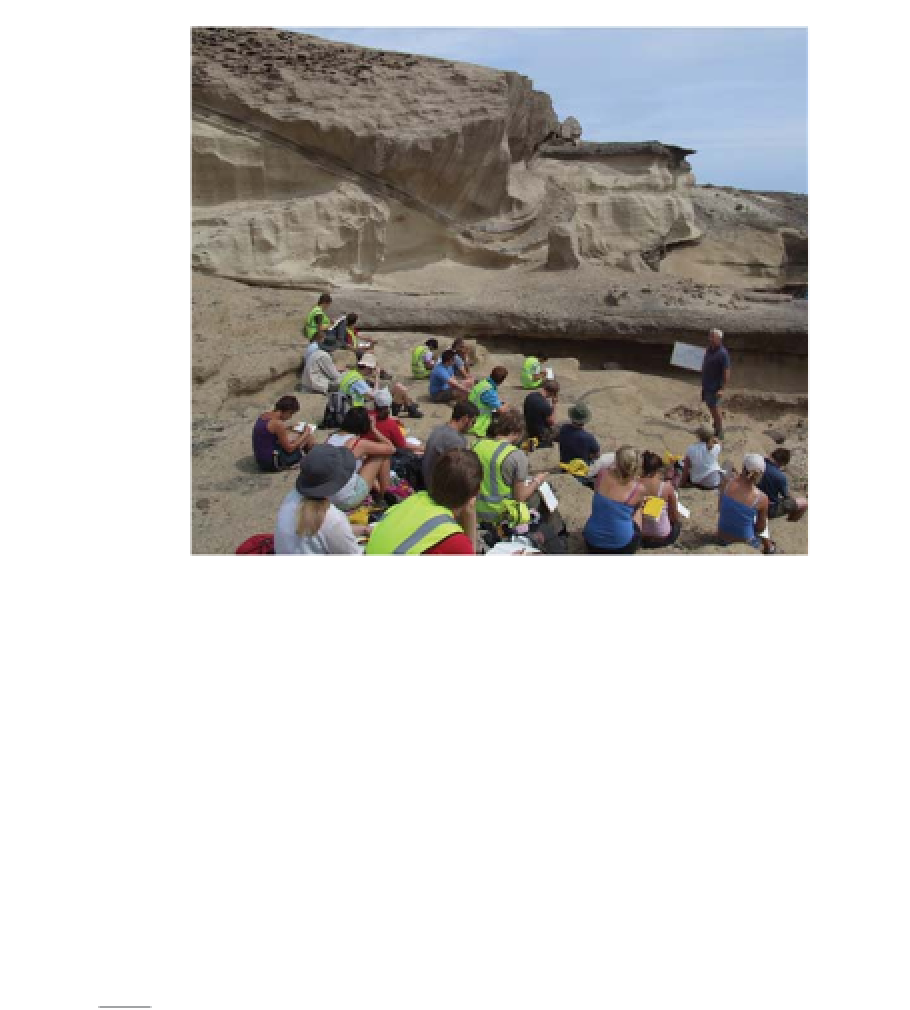Geology Reference
In-Depth Information
Figure 2.8
Students looking at pyroclastic deposits on Tenerife.
rhyolite lavas (Figure 2.9) with parallel bands of slightly different colour, on a
centimetre or millimetre scale, result from the streaking out of glassy, pumicious
or partially devitrified layers during movements of viscous lava. Parallel align-
ment of early-formed minerals in less viscous lavas and shallow intrusions of
intermediate and mafic compositions may also be expressed as banding parallel
to the direction of movement, and it is typical of feldspars in some types of
andesites and basalts (see also Chapter 6).
On a larger scale, intrusions of all kinds may develop flow structures imparted
either by migration of magma from its source to its zone of emplacement, or by
subsequent stirring/convection within a chamber before the magma consolidated.
In granitic rocks the parallel alignment of large well-shaped feldspar phe-
nocrysts, sometimes termed megacrysts, is particularly common near the margins
of intrusions where flow-aligned inclusions may also occur (Figure 2.10). It will
be self-evident that, where preferred orientation of minerals or inclusions occurs
in an intrusion, several faces of an exposure must be studied at the same out-
crop in order to gain a full three-dimensional picture. Note that care should be
taken to distinguish flow banding in coarse-grained igneous rocks from gneissose
banding, developed through metamorphism.
A different kind of mineral layering, not simply related to magma flow,
is commonly seen in ultra-mafic to mafic rocks (for example, peridotites and

















